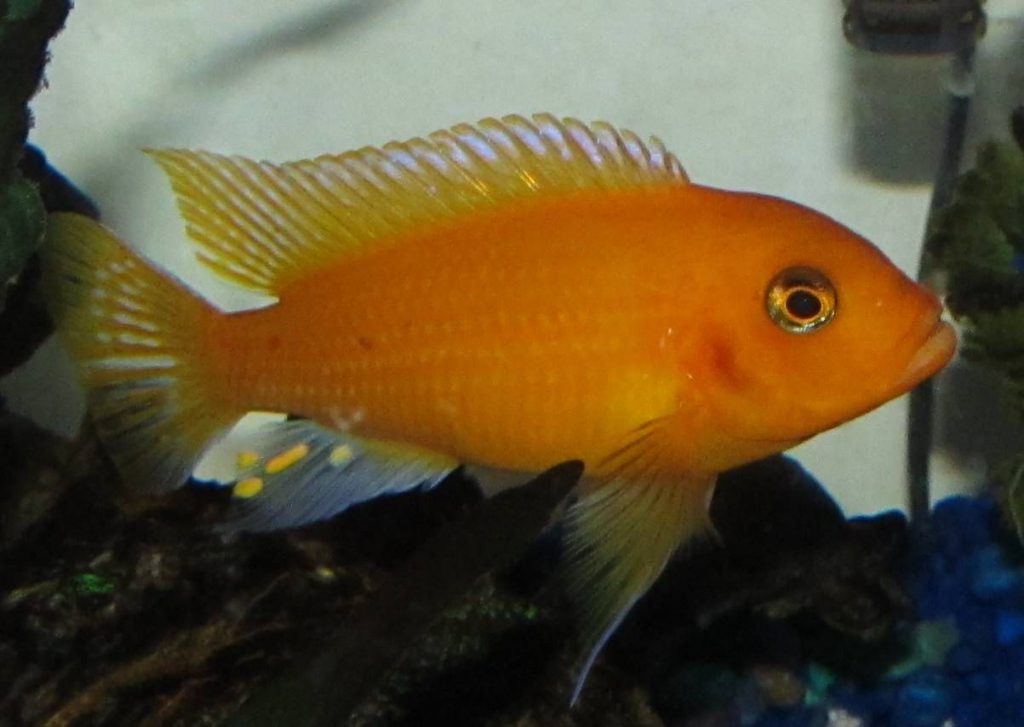

– How Long Do Female Red Zebra Cichlids Hold Their Fry?.– How Does Breeding Take Place in Red Zebra Cichlids?.– How Do You Encourage Breeding in Red Zebra Cichlids?.– Fishes You Should Not Keep With the Red Zebra Cichlid.– What Fish Can Be Kept With the Red Zebra Cichlid.– Other Proactive Measures in Caring for a Red Zebra Cichlid.Now, orange colorations have appeared in males in addition to the wild-type blue coloration.

They have become popular in captivity, although their coloration has been modified. Red Zebra Cichlids are native to Africa's Lake Malawi. Temperament seems to depend largely on the individual fish. However, some people have reported that their Red Zebra Cichlids are indeed fairly aggressive. Other, similarly sized fish with similar temperaments can make good choices for Red Zebra Cichlid companions. It is territorial, but is fairly peaceful, particularly when compared to other Cichlids.

The Red Zebra Cichlid usually swims at the lower and middle levels of its enclosure. The contrast in the colorations of the sexes can be quite pleasing for many freshwater aquarists. The beautiful Red Zebra Cichlid can make enclosures beautiful and bright, particularly when kept in male-female pairs. The Red Zebra Cichlid fry are usually offered algal growths inside the spawning tank, on which they can feed.įresh water fish - usually swims at the lower and middle levels of its enclosure Normally, females holding eggs are transferred to a well-grown spawning tank and removed after they have released their eggs. Mouthbrooders, Red Zebra Cichlids should be well fed before they must undergo the incubation process. Normally, healthy Red Zebra Cichlids can be bred fairly easily in captivity, so long as they are allowed plenty of space. The fish form pairs and mate monogamously, males attracting females by showing off their colors. Male Red Zebra Cichlids are usually identified by the presence of egg spots on their anal fins. Some people also offer live or frozen bloodworms, however, many people maintain that bloodworms can cause intestinal blockages in Cichlids and do not include these in their fish's diets. Most will do well when fed once a week on protein sources such as glass worms, brine shrimp, live crickets, mealworms, frozen beef heart, daphnia, and plankton. Vegetable matter should be the mainstay of the Red Zebra Cichlid's diet. Herbivore flakes and tablets are also available to supplement the diet. Chopped zucchini, spinach, and peas should be offered and are particularly important to help your Cichlids maintain proper growth and color. Red Zebra Cichlids are primarily herbivorous and excessive protein in the diet is detrimental to these fish. Red Zebra Cichlids can sometimes be kept successfully with fish of similar size and temperament that are not African Cichlids however, because of their sometimes highly aggressive nature and the optimum pH and salinity levels for African Cichlids, it is recommended that they only be kept in African Cichlid communities. Plenty of hiding places should be allowed rock, driftwood, and live plants that your Cichlids cannot destroy, like Java Moss or Java Fern, may be good choices. Water temperatures for Red Zebra Cichlids should remain around 80 degrees Fahrenheit (27 degrees Celsius) with a degree of hardness of about 22. By the time they are adults, Red Zebra Cichlids reach lengths between three and five inches (seven to 12 centimeters). Females are bright orange, regardless of whether they have been captive-bred or wild-caught. Although most wild-type males are powder blue in color, many captive-bred males are pastel orange. Male and female Red Zebra Cichlids show distinct sexual dimorphism. Scientific Name: Pseudothropheus estherae


 0 kommentar(er)
0 kommentar(er)
